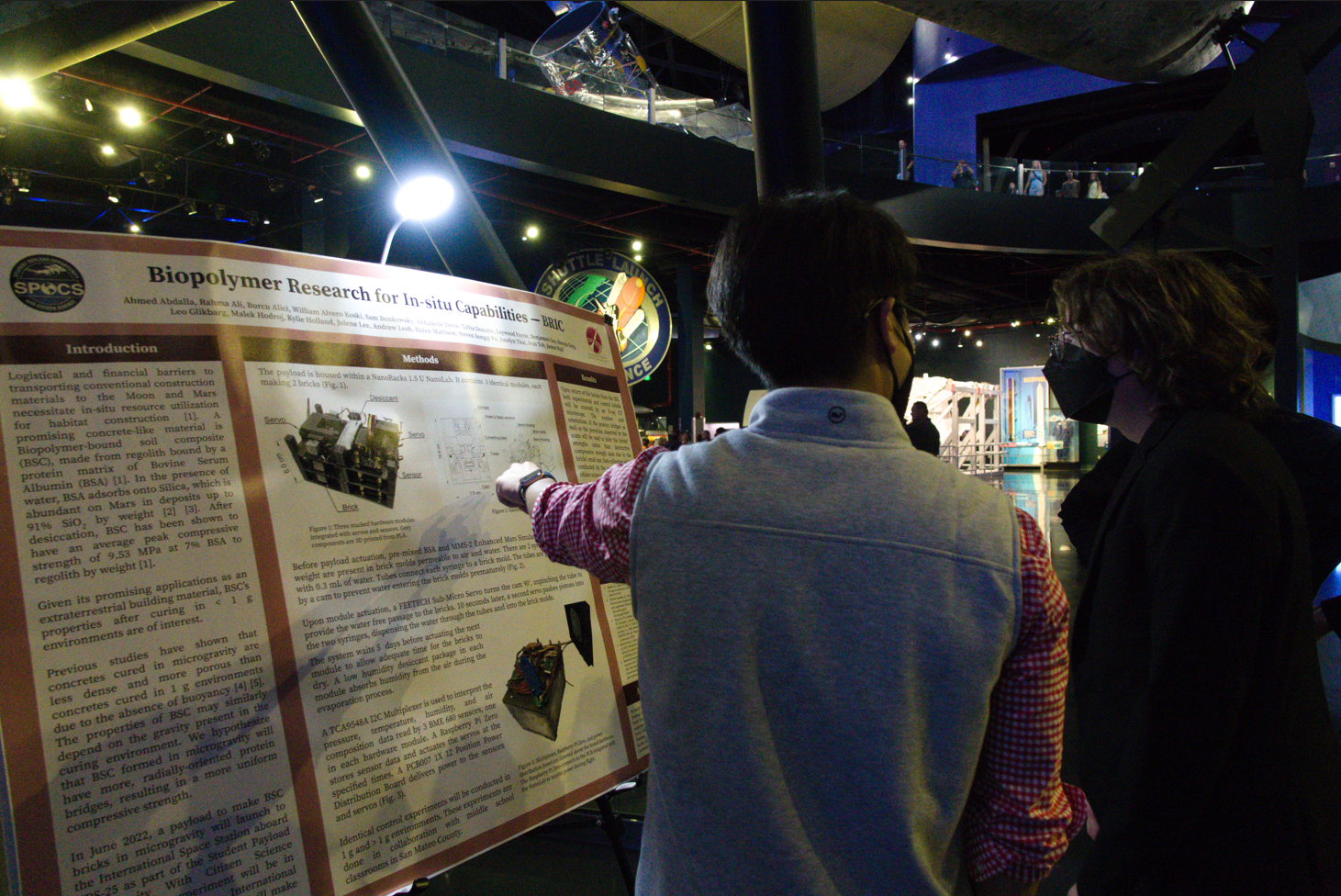
Design, manufacture, and assemble a NASA-funded payload that flew to the ISS on SpaceX CRS-25 for microgravity studies on biopolymer-bound soil composites (BSCs).
Biopolymer Research for In-Situ Capabilities (BRICs)
To replace resources that would otherwise be brought from Earth, in-situ resource utilization (ISRU) is the practice of collecting, processing, and storing resources found or manufactured on astronomical objects such as Mars. The purpose of our experiement is to investigate the efforts of microgravity on the biopolymer-bound soil composites made of Martian regolith simulant, a protein matrix formed by bovine serum albumin (BSA), and water.
Our payload consists of 3 modules stacked on top of each other, each holding 2 bricks to produce a total of 6 bricks. Each brick mold contained pre-mixed regolith and protein with a cam follower pinching a water-filled tube shut to prevent the bricks from forming before being introduced in the microgravity environment. While the experiment was activated in space, the Raspberry Pi Zero would actuate one module every 5 days by unpinching the tubes and using a servo to push a syringe plunger that would introduce the water into the brick mixture. The water then passively evaporates from the bricks and is absorbed by the desiccants. The humidity, temperature, and pressure data is recorded throughout the entire experiment.
My role on the team was to update CAD designs, complete 3D printing, and integrate critical electrical and mechanical components into the payload. My primary focus was on manufacturing multiple payloads for both the ISS experiment and our control and citizen science outreach experiments. We were also able to perform shock and vibration testing to verify our payload’s ability to resist dynamic loads without losing critical functional or structural integrity under given launch conditions.
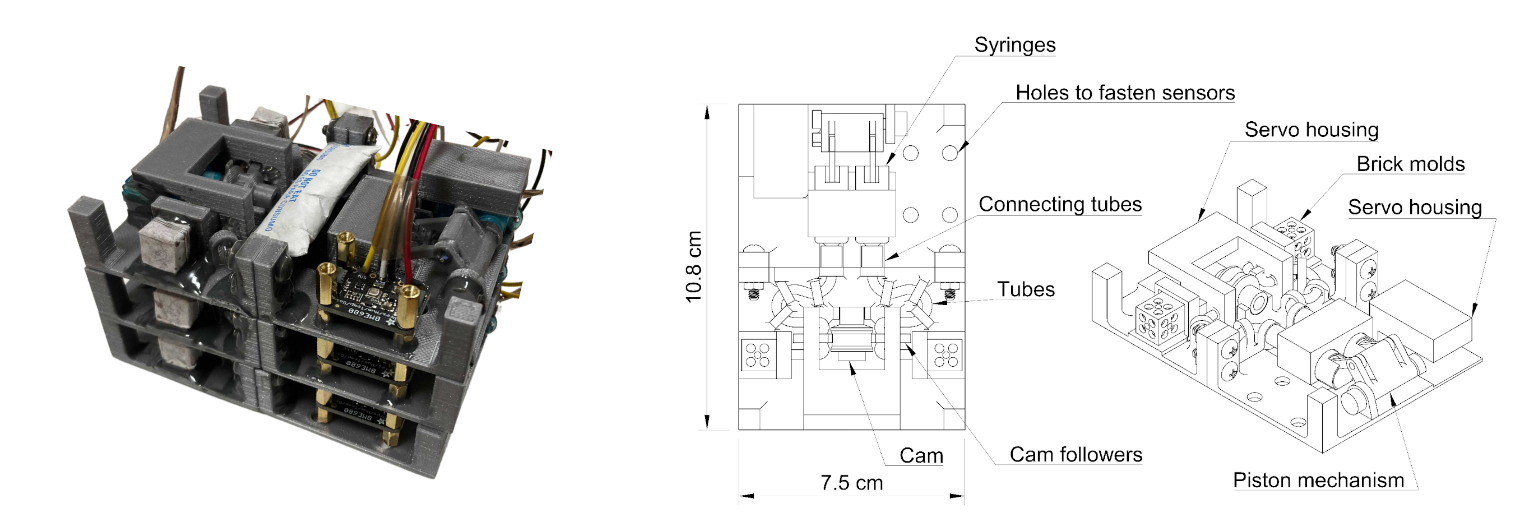
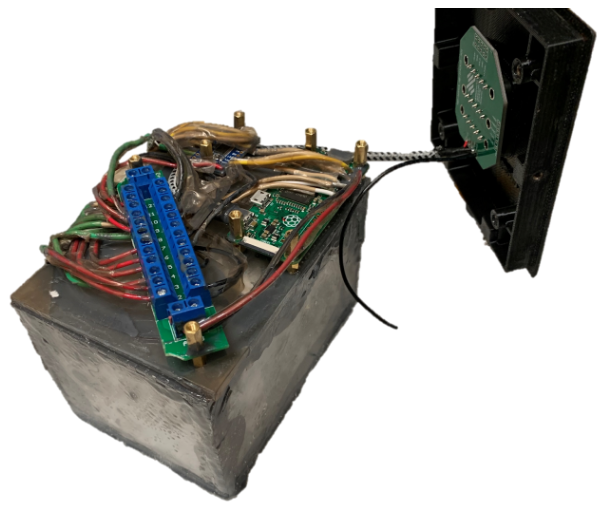
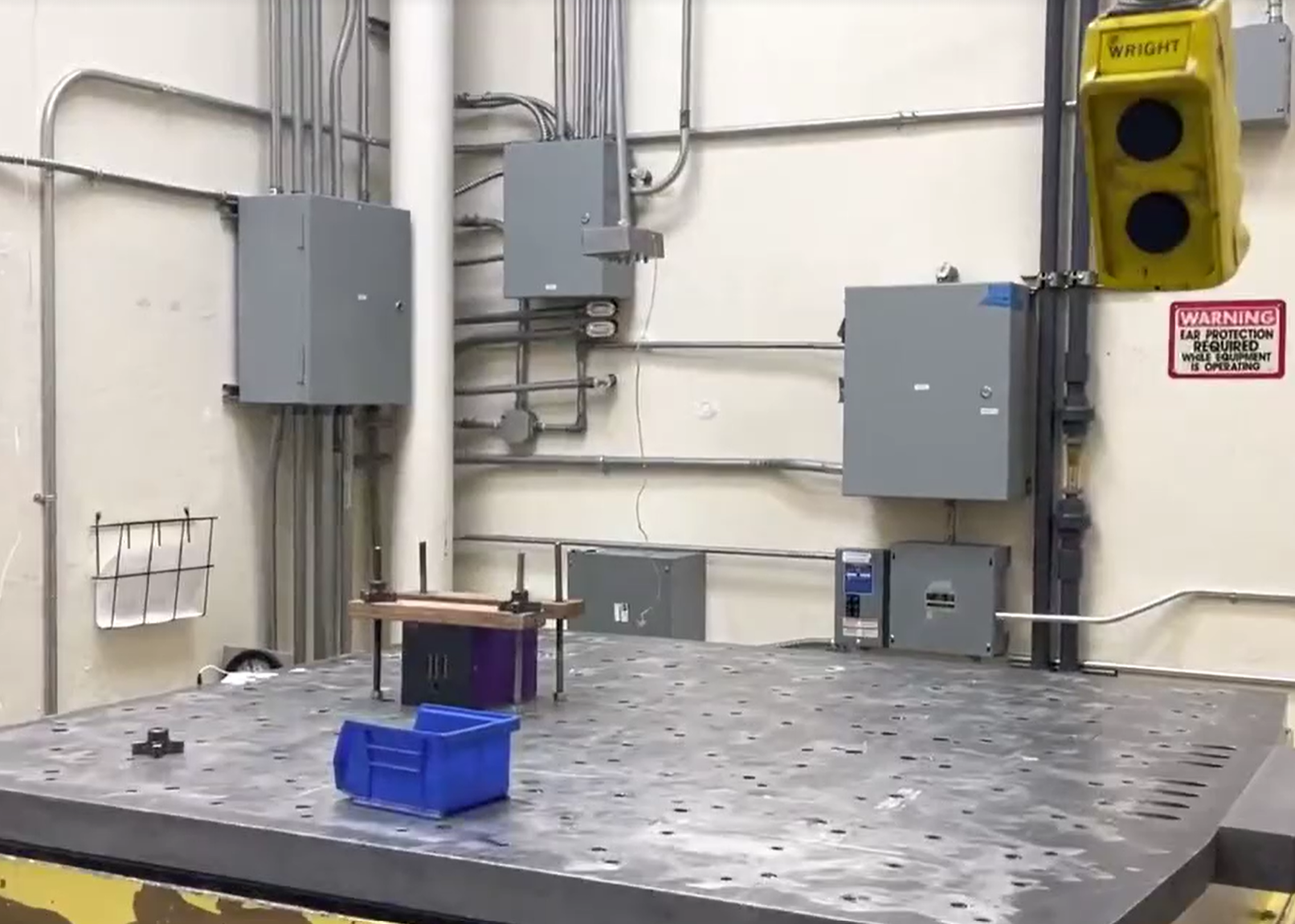


Citizen Science Community Outreach
As a part of the NASA SPOCS (Student Payload Opportunity with Citizen Science) $20,000 grant, we engaged in multiple community outreach efforts to incorporate citizen science into our project. We reached out to a total of 6 classrooms in the historically under-resourced San Mateo County Office of Education, introducing 177 students to our experiment and to the excitement of space research. In each 90-minute interactive seminar, we hosted hands-on brick building activities and facilitated an engaging discussion on developing and testing scientific hypotheses. These schools were also selected to host our control payloads to incorporate citizen science into our data collection process. Several other workshops and presentations were held both in-person and online in partnership with the Stanford Society of Women Engineers and Chabot Space and Science Center, reaching an additional 300 students. I was responsible for coding, soldering, and wiring on LCD displays to the control payloads to show the students the data readouts and assisted with the presentations.
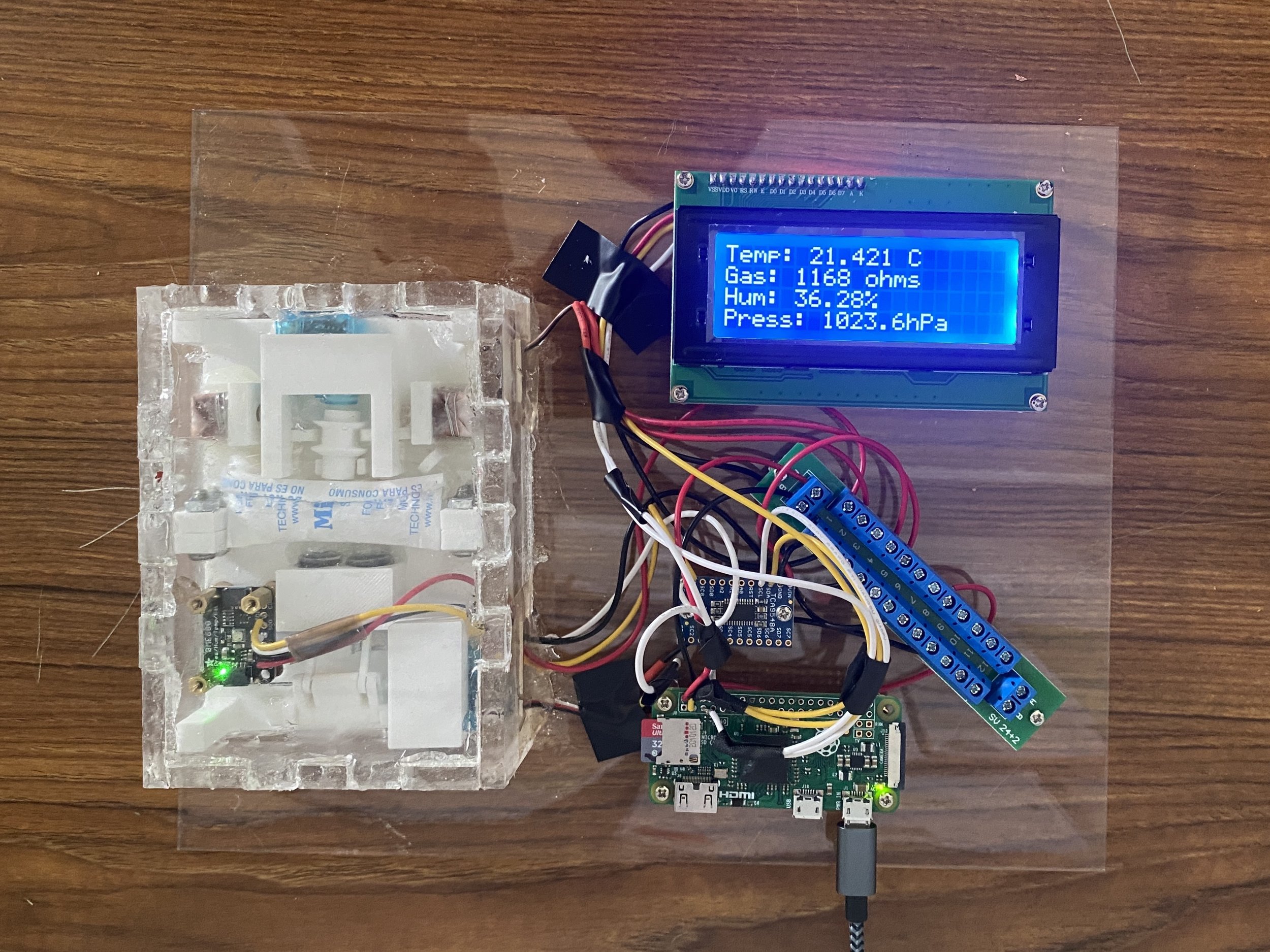
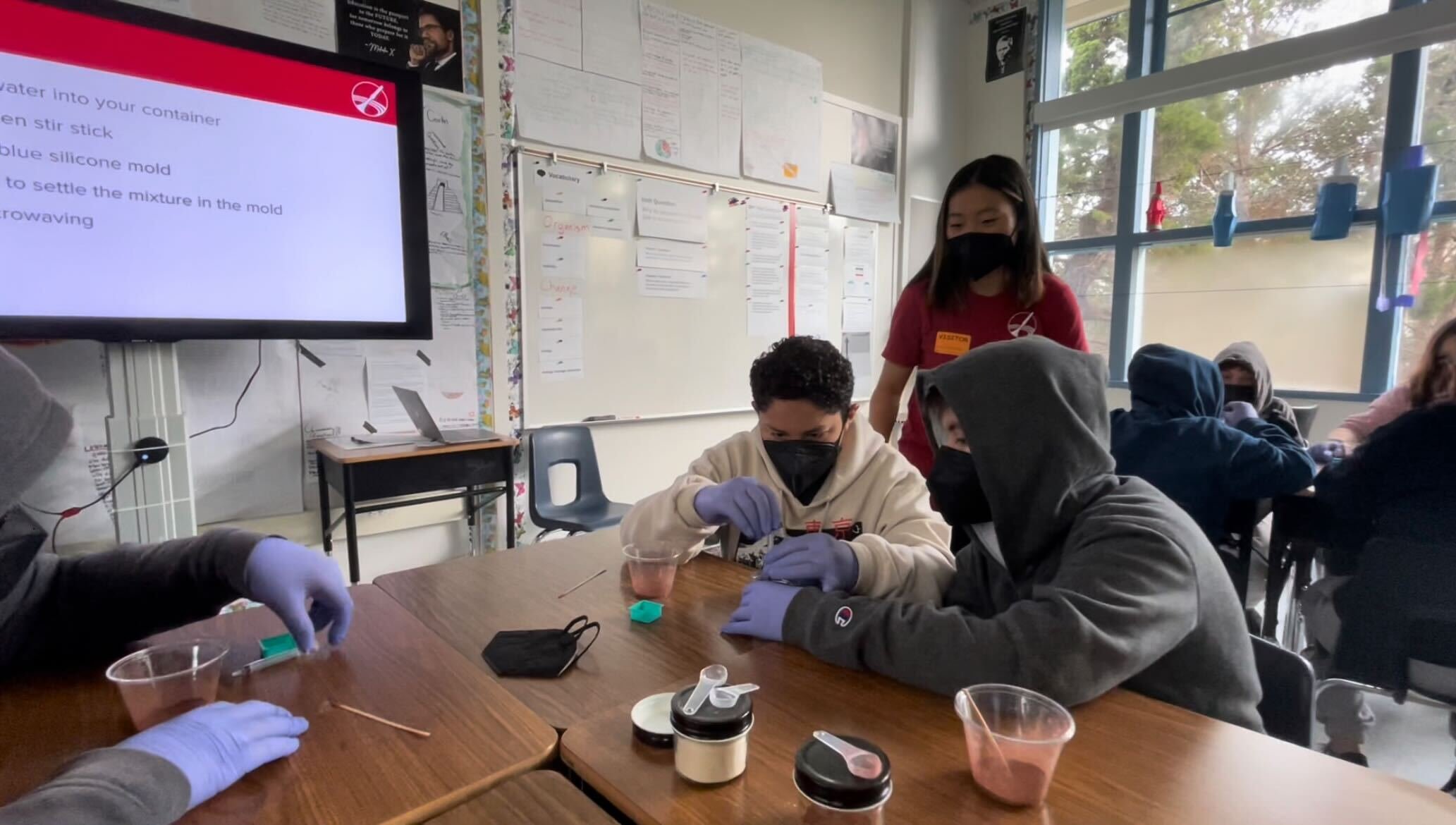
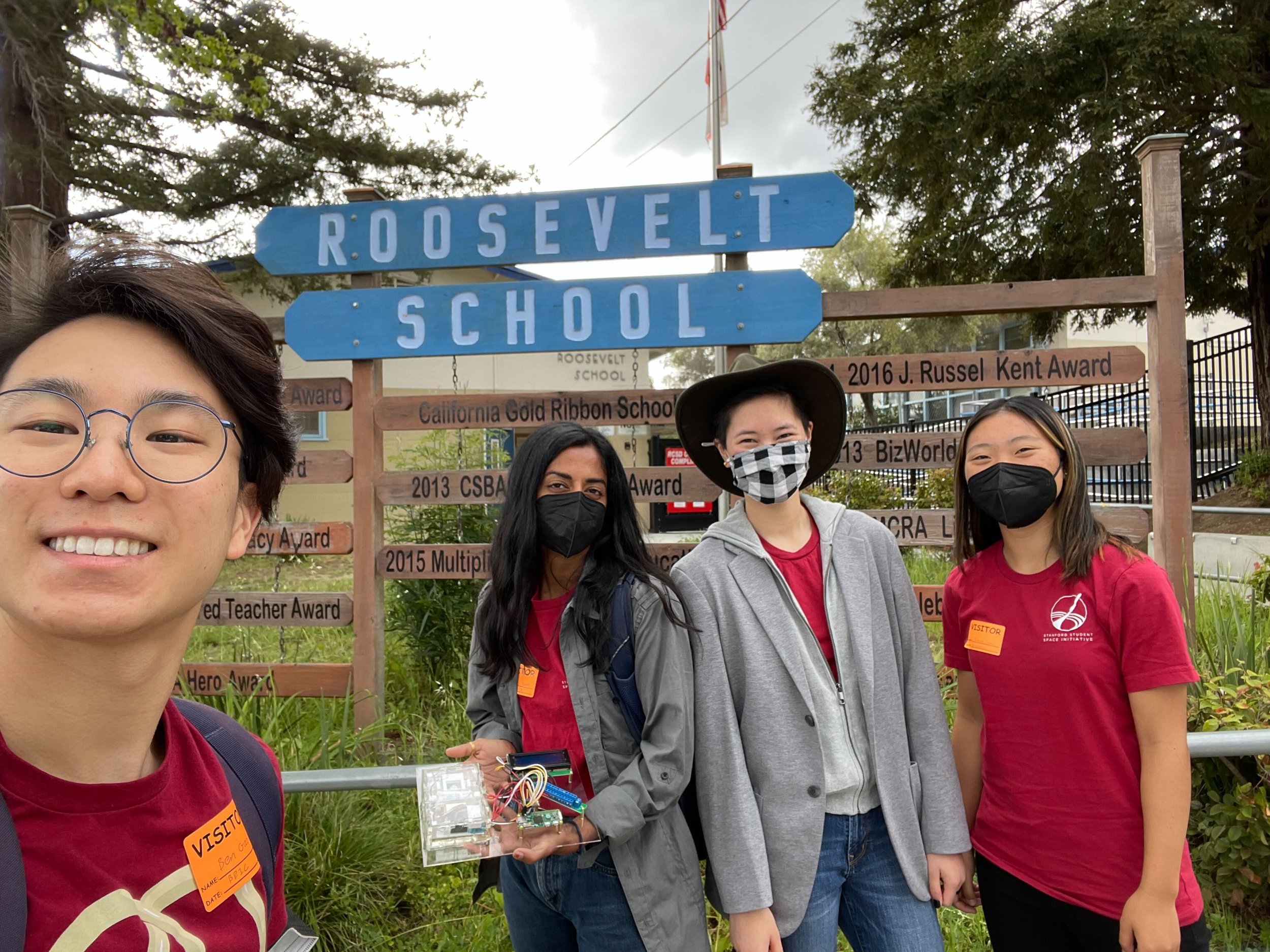
Attending the Rocket Launch at NASA KSC
NASA flew our team out to Cape Canaveral July 13-16, 2022 to watch the SpaceX CRS-25 launch carry our payload to the ISS. We were interviewed for the @iss social media account, gave a poster presentation at the Kennedy Space Center, met former astronauts, and experienced our first in-person rocket launch.


